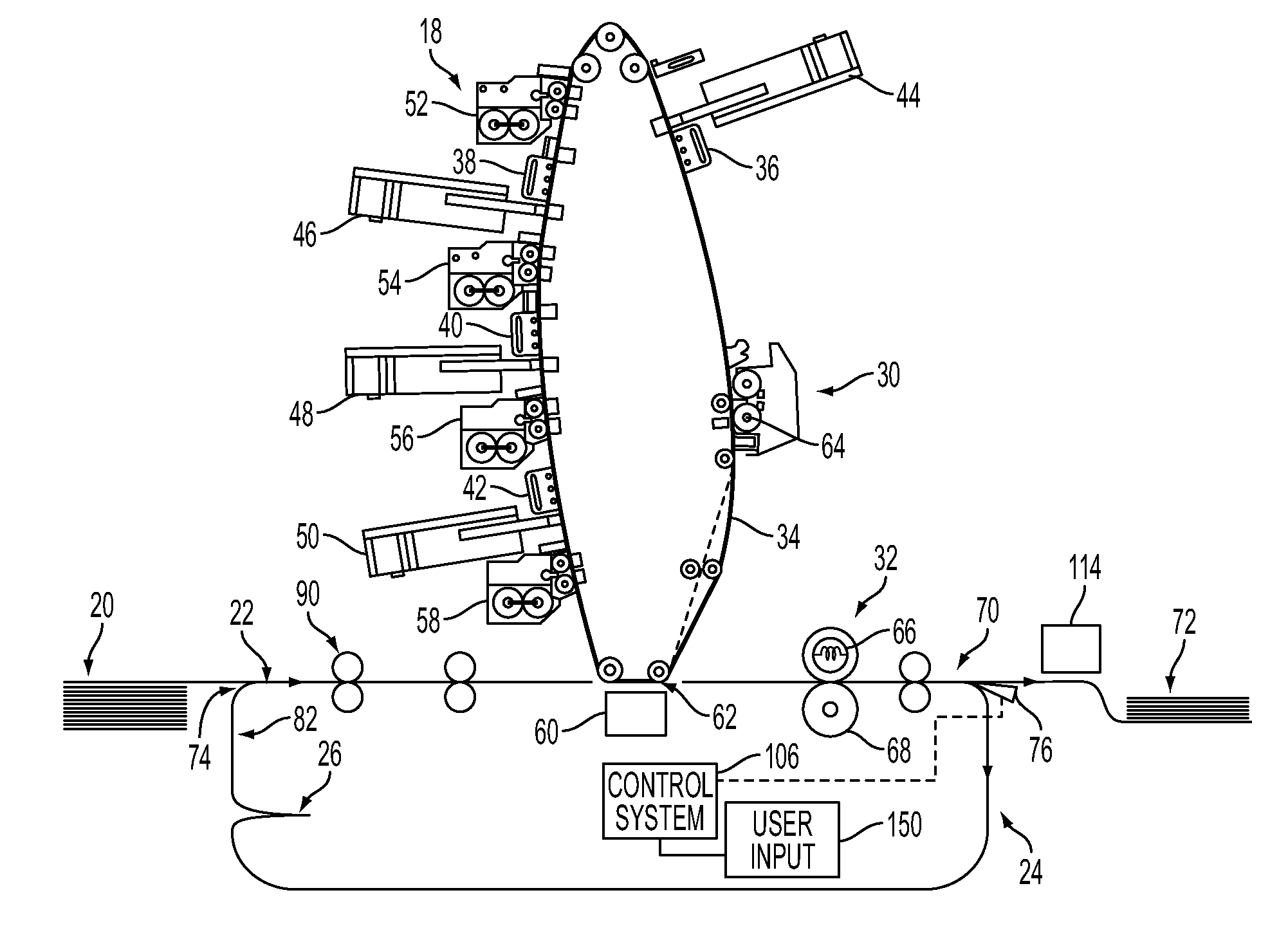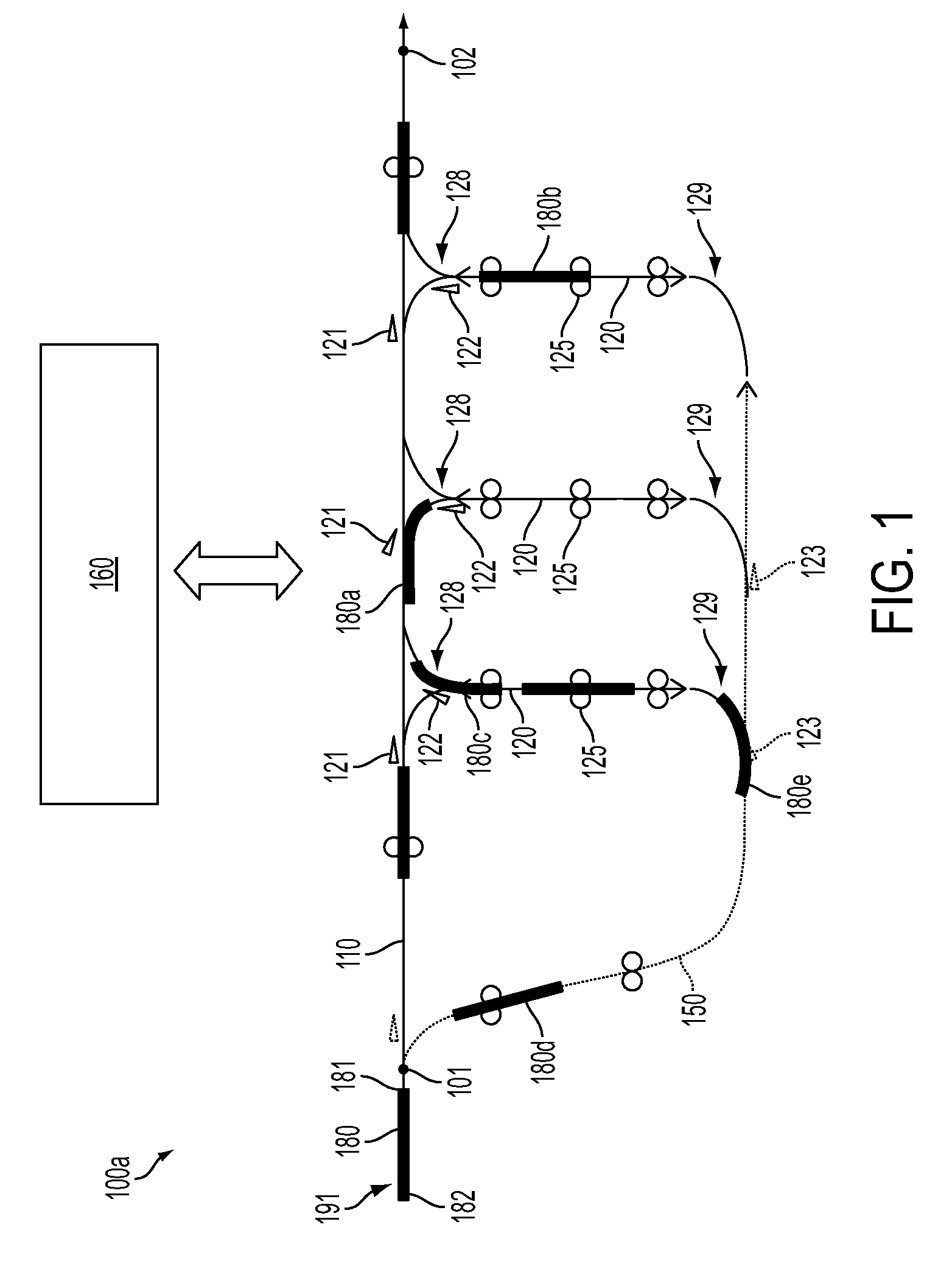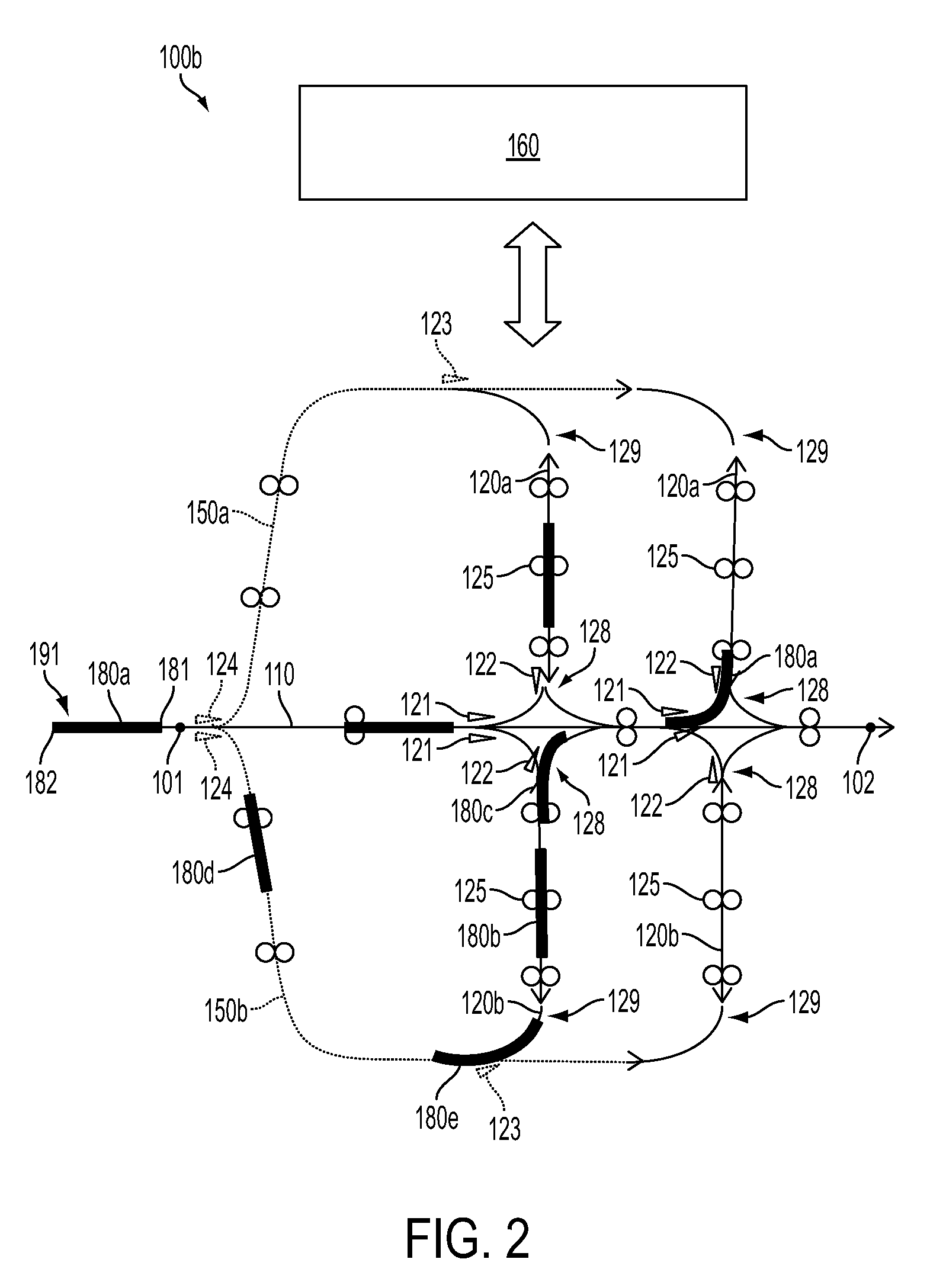Combined sheet buffer and inverter
a technology of inverter and buffer, which is applied in the field of combined sheet buffer and inverter, can solve the problems of multi-color pages printed out of order, affecting the timing of sheet output and at output, and reducing so as to reduce the number of non-printing on-off, the effect of cost saving and cost saving
- Summary
- Abstract
- Description
- Claims
- Application Information
AI Technical Summary
Benefits of technology
Problems solved by technology
Method used
Image
Examples
Embodiment Construction
[0030]As mentioned above, sheets being processed within a modular printing system may benefit from buffering and / or inverting after processing by multiple heterogeneous printing engines. For example, U.S. patent application Ser. No. 12 / 211,853 of Bober et al., for a “RECONFIGURABEL SHEET TRANSPORT MODULE”, filed on Sep. 17, 2008, and U.S. patent application Ser. No. 12 / 331,768 of Mandel et al., for a “MODULAR PRINTING SYSTEM”, filed on Dec. 10, 2008 (both of which are assigned to Xerox Corporation of Norwalk, Conn., USA, and incorporated herein by reference in their entirety) both disclose electrostatographic printing systems comprising multiple modules (i.e., discrete interchangeable units). Each module comprises one or more of the printing system's functional components (e.g., sheet feeders, printing engines, finishers, etc.) structurally self-contained within its own supporting frame and housing (i.e., cabinet).
[0031]Oftentimes multi-page documents contain both single color (i.e....
PUM
| Property | Measurement | Unit |
|---|---|---|
| sheet transport | aaaaa | aaaaa |
| movement | aaaaa | aaaaa |
| length | aaaaa | aaaaa |
Abstract
Description
Claims
Application Information
 Login to View More
Login to View More - R&D
- Intellectual Property
- Life Sciences
- Materials
- Tech Scout
- Unparalleled Data Quality
- Higher Quality Content
- 60% Fewer Hallucinations
Browse by: Latest US Patents, China's latest patents, Technical Efficacy Thesaurus, Application Domain, Technology Topic, Popular Technical Reports.
© 2025 PatSnap. All rights reserved.Legal|Privacy policy|Modern Slavery Act Transparency Statement|Sitemap|About US| Contact US: help@patsnap.com



